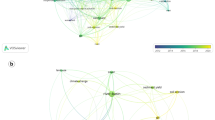Abstract
Severe degradation of water quality from nutrient pollutants has increased eutrophication that affects aquatic ecosystems and increases the cost of water treatment. This study was conducted in the Sengari Reservoir basin, which experiences high eutrophication due to phosphorus in the nutrient load it receives. Dissolved phosphate–phosphorus (PO4–P) accounts for the highest ratio of total phosphorus flowing into the reservoir. The aim of this study was to quantitatively investigate the PO4–P load emitted from different land uses in the basin. Water was sampled at regular intervals and analyzed to understand the temporal and spatial changes in PO4–P concentration in the basin’s rivers. Linear regression water-quality predictive models were thereafter constructed. A comparison was made between the irrigation and non-irrigation periods, and sub-basins with septic tanks and those with rural sewage treatment plants. Results from linear regression models indicated that paddy fields and residential areas had the highest coefficients compared to forests and golf courses. The irrigation period had a high PO4–P concentration compared to the non-irrigation period. Sub-basins with septic tanks had a high PO4–P compared to those with rural sewage treatment plants. Effectively managing water quality in the Sengari Reservoir to reduce eutrophication depends on significantly reducing the nutrients in agricultural areas, particularly during the irrigation period, and adequately treating water before discharging it into the rivers. The models provided a helpful tool for conducting a non-point source phosphorous investigation in the Sengari Reservoir to prevent excessive pollution from nutrient load.





Similar content being viewed by others
References
Ai L, Shi ZH, Yin W, Huang X (2015) Spatial and seasonal patterns in stream water contamination across mountainous watersheds: linkage with landscape characteristics. J Hydrol 523:398–408. https://doi.org/10.1016/j.jhydrol.2015.01.082
Bahar M, Ohmori H, Yamamuro M (2008) Relationship between river water quality and land use in a small river basin running through the urbanizing area of central Japan. Limnology 9:19–26. https://doi.org/10.1007/s10201-007-0227-z
Carpenter SR (2008) Phosphorus control is critical to mitigating eutrophication. Proc Natl Acad Sci 105:11039–11040. https://doi.org/10.1073/pnas.0806112105
Carpenter SR, Caraco NF, Correll DL et al (1998) Nonpoint pollution of surface waters with phosphorus and nitrogen. Ecol Appl 8:559–568. https://doi.org/10.1890/1051-0761
Chen X, Liu X, Peng W, Dong F et al (2017) Non-point source nitrogen and phosphorus assessment and management plan with an improved method in data-poor regions. Water. 1:17. https://doi.org/10.3390/w10010017
Fujiwara T (2014) Phosphorus in Sengari reservoir. Rep Civ Soc Muko River 2:20–22 (in Japanese)
Giri S, Qiu Z (2016) Understanding the relationship of land uses and water quality in twenty first century: a review. J Environ Manag 173:41–48. https://doi.org/10.1016/j.jenvman.2016.02.029
Hoorman J, Hone T, Sudman T et al (2008) Agricultural impacts on lake and stream water quality in Grand Lake St. Marys, Western Ohio. Water Air Soil Pollut 193:309–322. https://doi.org/10.1007/s11270-008-9692-1
Hyogo Prefecture Agricultural and Environmental Affairs Department Environmental Management Bureau Water and Air Quality Control Division (2016) Water quality survey in Sengari Reservoir basin. Material for Hyogo Prefecture Environmental Council Water Environment Group (in Japanese)
Kang J, Lee SW, Cho KH et al (2010) Linking land-use type and stream water quality using spatial data of fecal indicator bacteria and heavy metals in the Yeongsan river basin. Water Res 44:4143–4157. https://doi.org/10.1016/j.watres.2010.05.009
Kennen JG, Riva-Murray K, Beaulieu KM (2010) Determining hydrologic factors that influence stream macroinvertebrate assemblages in the northeastern US. Ecohydrology 3:88–106. https://doi.org/10.1002/eco.99
Meyer JL, Paul MJ, Taulbee WK (2005) Stream ecosystem function in urbanizing landscapes. J N Am Benthol Soc 24:602–612. https://doi.org/10.1899/04-021.1
Ministry of Land, Infrastructure, Transport and Tourism (2016) Utilization situation of water resource, Present situation of water resource in Japan. http://www.mlit.go.jp/common/001177457.pdf (in Japanese)
Mochizuki H, Takahashi H, Yoshikawa S (2013) Development of prediction model for water quality in watersheds based on proportion of area by land use. Hum Environ 39:2–8 (in Japanese)
Ogawa S (2005) Runoff of rainwater, sediment, and nutrient from forest areas with reference to forest management. Ecol Civ Eng 8:51–59 (in Japanese)
Pratt B, Chang H (2012) Effects of land cover, topography, and built structure on seasonal water quality at multiple spatial scales. J Hazard Mater 209:48–58. https://doi.org/10.1016/j.jhazmat.2011.12.068
Roy K (2007) Water resources in relation to major agro-environmental issues in Japan. J Dev Sustain Agric 2:27–34
Seilheimer TS, Zimmerman PL, Stueve KM, Perry CH (2013) Landscape-scale modeling of water quality in Lake Superior and Lake Michigan watersheds: how useful are forest-based indicators? J Gt Lakes Res 39:211–223. https://doi.org/10.1016/j.jglr.2013.03.012
Smith VH, Tilman GD, Nekola JC (1998) Eutrophication: impacts of excess nutrient inputs on freshwater, marine, and terrestrial ecosystems. Environ Pollut 100:179–196. https://doi.org/10.1016/S0269-7491(99)00091-3
Somura H, Takeda I, Arnold JG et al (2012) Impact of suspended sediment and nutrient loading from land uses against water quality in the Hii River basin, Japan. J Hydrol 450:25–35. https://doi.org/10.1016/j.jhydrol.2012.05.032
Tong STY, Chen W (2002) Modeling the relationship between land use and surface water quality. J Environ Manag 66:377–393. https://doi.org/10.1006/jema.2002.0593
Xiao H, Ji W (2007) Relating landscape characteristics to non-point source pollution in mine waste-located watersheds using geospatial techniques. J Environ Manag 82:111–119. https://doi.org/10.1016/j.jenvman.2005.12.009
Zhang W, Li H, Sun D, Zhou L (2012) A statistical assessment of the impact of agricultural land use intensity on regional surface water quality at multiple scales. Int J Environ Res Public Health 9:4170–4186. https://doi.org/10.3390/ijerph9114170
Acknowledgements
The authors express their sincere gratitude to the Water Quality Examination Laboratory, Kobe City Water Works Bureau, for the provision of data. This study was supported by JSPS KAKENHI Grant Number 16K15007.
Author information
Authors and Affiliations
Corresponding author
Rights and permissions
About this article
Cite this article
Kimengich, B.K., Takeuchi, J., Goto, K. et al. Temporal and spatial change in phosphate–phosphorus concentration and modeling with land-use variation in Sengari reservoir basin, Japan. Paddy Water Environ 17, 131–139 (2019). https://doi.org/10.1007/s10333-019-00705-6
Received:
Revised:
Accepted:
Published:
Issue Date:
DOI: https://doi.org/10.1007/s10333-019-00705-6




